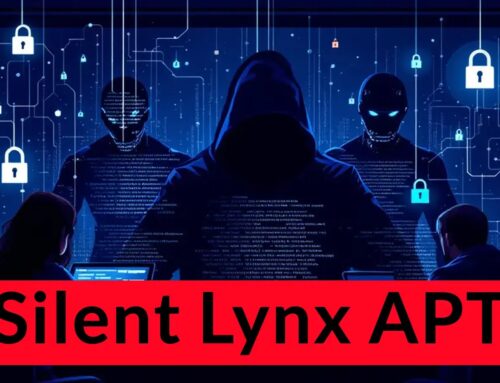
Hackers Abuse VPS Servers To Compromise Software-as-a-service (SaaS) Accounts
The digital landscape is a constant battleground, and threat actors are perpetually refining their tactics. A disturbing trend has emerged in recent times: the increased abuse of Virtual Private Server (VPS) infrastructure to launch sophisticated attacks against Software-as-a-Service (SaaS) platforms. This insidious strategy leverages the inherent anonymity and often pristine reputations of VPS providers, allowing cybercriminals to bypass conventional security controls with alarming efficacy. Understanding this evolving threat is paramount for any organization reliant on SaaS.
The Evolution of SaaS Attacks: Weaponizing Cloud Anonymity
Traditional attack vectors often leave discoverable footprints. However, the coordinated campaigns identified demonstrate a strategic shift. Threat actors are no longer relying on compromised consumer devices or easily traceable botnets. Instead, they are systematically exploiting the legitimate services offered by VPS providers, transforming them into launchpads for their malicious endeavors. This approach grants them significant advantages:
- Enhanced Anonymity: VPS providers often offer account setup with minimal identity verification, making it difficult to trace the true origin of an attack.
- Clean IP Reputations: New VPS instances typically come with fresh, untainted IP addresses, allowing attackers to slip past IP blacklists and reputation-based filtering deployed by many security solutions.
- Scalability and Accessibility: VPS services are readily available and can be quickly provisioned or decommissioned, providing attackers with agile infrastructure for their campaigns.
Reports from early 2025 highlighted campaigns where specific VPS providers like Hyonix, Host Universal, Mevspace, and Hivelocity were demonstrably abused. These providers, while legitimate businesses, became unwitting conduits for cybercriminal activity targeting SaaS environments.
Why SaaS Accounts Are Prime Targets
SaaS applications are the backbone of modern business operations, housing critical data, intellectual property, and access to an organization’s internal IT ecosystem. Compromising a SaaS account can lead to:
- Data Breaches: Unauthorized access to sensitive customer data, financial records, or proprietary information.
- Supply Chain Attacks: Leveraging a compromised SaaS account as a pivot point to attack connected systems or customers.
- Financial Fraud: Direct manipulation of financial transactions or access to payment systems.
- Reputational Damage: Significant loss of trust from customers and partners.
The ultimate goal is often to gain initial access, escalate privileges, and then exfiltrate data or deploy further malware. The anonymity afforded by VPS infrastructure significantly complicates attribution and rapid response.
Technical Modus Operandi and Indicators of Compromise (IoCs)
While the exact attack chains vary, common tactics observed involve:
- Credential Stuffing and Brute-Forcing: Automated attempts to log into SaaS accounts using leaked credentials or dictionary attacks originating from VPS IP ranges.
- Phishing Campaigns: Hosting sophisticated phishing landing pages on VPS servers to harvest user credentials, often mimicking legitimate SaaS login portals.
- Malware Delivery: Utilizing VPS instances to host command-and-control (C2) infrastructure or distribute malware designed to steal SaaS session tokens or credentials.
- API Abuse: Exploiting misconfigured or vulnerable SaaS APIs from VPS instances to gain unauthorized access or manipulate data.
Key Indicators of Compromise (IoCs) associated with these types of attacks often include:
- Unusual login attempts from known VPS IP ranges (e.g., from Hyonix, Host Universal, Mevspace, Hivelocity networks).
- High volume of failed login attempts against SaaS accounts.
- Access attempts from geographic locations inconsistent with normal user behavior.
- Unauthorized API calls or data exfiltration attempts.
Remediation Actions and Proactive Defense Strategies
Mitigating the risk of VPS-abused attacks requires a multi-layered approach focusing on identity, access, and network security. There is no specific CVE tied directly to the abuse of VPS services; rather, it is an attack vector exploiting various vulnerabilities. However, organizations should assume that common vulnerabilities like weak authentication mechanisms (e.g., CVE-2023-38890, related to authentication bypasses in certain web applications) or unpatched software could be leveraged through this vector.
For Organizations Using SaaS:
- Enforce Multi-Factor Authentication (MFA): Implement mandatory MFA for all SaaS accounts, especially for administrative roles. This is the single most effective deterrent against credential-based attacks.
- Least Privilege Access: Grant users only the minimum necessary permissions required for their roles within SaaS applications.
- Regular Security Audits: Conduct periodic audits of SaaS configurations, user permissions, and access logs for anomalous activity.
- IP Whitelisting/Blacklisting: Where feasible, restrict access to SaaS applications to approved IP ranges. However, be cautious as attackers can use VPNs or proxies.
- Security Awareness Training: Educate employees about phishing, social engineering, and the importance of strong, unique passwords.
- Monitor Login Activity: Implement robust logging and monitoring for all SaaS applications. Look for suspicious login patterns, too many failed attempts, or access from unusual locations/IPs.
For SaaS Providers:
- Implement Advanced Threat Detection: Deploy security solutions that can identify and block automated attacks, credential stuffing, and bot activity.
- IP Reputation Services: Integrate reputation services to flag and potentially block connections from known malicious IP ranges, including those associated with VPS abuse.
- Behavioral Analytics: Monitor user behavior for deviations from baselines, such as unusual access times, data volumes, or API call patterns.
- Rate Limiting: Implement strict rate limiting on login attempts and API calls to prevent brute-force and denial-of-service attacks.
- Fraud Detection Systems: For financially oriented SaaS applications, employ advanced fraud detection.
Relevant Tools for Detection and Mitigation
| Tool Name | Purpose | Link |
|---|---|---|
| SIEM (Security Information and Event Management) Systems | Centralized logging and correlation of security events across all SaaS applications and infrastructure. Aids in anomaly detection and incident response. | N/A (Vendor-specific, e.g., Splunk, Microsoft Sentinel) |
| CASB (Cloud Access Security Broker) | Enforces security policies for cloud services, provides visibility into SaaS usage, detects threats, and prevents data loss. | N/A (Vendor-specific, e.g., McAfee MVISION Cloud, Netskope) |
| Identity and Access Management (IAM) Solutions | Manages digital identities and access permissions for users. Facilitates MFA and least privilege. | N/A (Vendor-specific, e.g., Okta, Duo Security) |
| Web Application Firewalls (WAFs) & API Security Gateways | Protects web applications and APIs from common attacks, including credential stuffing and DDoS. | N/A (Vendor-specific, e.g., Cloudflare, Akamai) |
| Threat Intelligence Platforms | Provides up-to-date information on malicious IPs, attack vectors, and threat actor tactics, aiding in proactive blocking. | N/A (Vendor-specific, e.g., Recorded Future, Mandiant) |
Conclusion
The increasing abuse of VPS servers for SaaS account compromise represents a significant evolution in cybercriminal methodology. This trend underscores the importance of a vigilant and adaptive cybersecurity posture. Organizations must move beyond perimeter defenses, focusing on robust identity and access management, continuous monitoring of SaaS environments, and comprehensive employee training. For SaaS providers, investing in advanced threat detection, API security, and behavioral analytics is no longer optional. By understanding this threat and implementing proactive measures, the integrity and security of critical SaaS-driven operations can be significantly strengthened.





